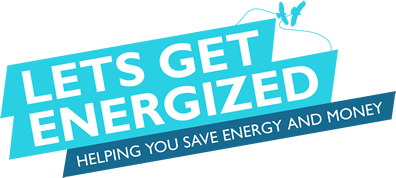 |
 |
 |
Wind Turbine Technology and the Lake Turkana ProjectFor centuries, humans have utilized wind energy through traditional windmills. The Netherlands has played a prominent role in the development of this sector, due to its geographic conditions. It has claimed significant portions of land through a complex water management system, driven by windmill power. The traditional windmill has for long kept its original concept, with a horizontal shaft connected to the wind vanes, which in turn was connected to a vertical shaft through a right angle transmission. This rotating shaft was utilized for the particular purpose of the windmill. It was only towards the end of the 1970s and early 80s that the windmill was seriously developed into modern turbines for generating electricity. Various test parks were built and it became a serious alternative method to generate electricity. The first significant wind turbines had a capacity of 100 kW, with steel wind blades. Since the early 90s, the developments in wind technology accelerated. Computer systems were incorporated to optimize the utilization and efficiency of the turbines. The capacity increased significantly with new, larger mills and better materials. Also the safety was drastically improved by using stronger, but also lighter materials. In addition, the knowledge and insight in wind streams and climatological circumstances further advanced, allowing the modern wind turbines to better anticipate the rapidly changing circumstances during showers, storms and other turbulent situations. The wind turbines were also equipped with lightning conduction and (if necessary) heating systems to prevent icing on the blades. Meanwhile, the scale of the turbines continued to grow. Whereas the capacity of the largest wind turbine in 1990 had a capacity of 225 kW, today’s turbines can produce up to 6 MW each. The diameter of the rotor increased from 27 to 112 meters, and the shaft height (hub height) from 30 to 125 meters. The latest models are equipped with sensors to determine undesired vibrations and allow the computer controlling system to take preventive measures. These sensors also make it possible to control the rotors individually, adjusting the angle of each blade independently during every rotation. This improves the efficiency, since the wind conditions for the blade in upright position differs from the ones below. Don’t believe what you hear that wind energy turbines are not efficient its not true and developing our on-shore and off shore wind farms will give the UK greater energy sustainability Just take a look at this project in Kenya !!
Lake Turkana Wind Project
The Lake Turkana Wind Power Project (LTWP) aims to provide 300MW of reliable, low cost wind power to the Kenya national grid, equivalent to approximately 20% of the current installed electricity generating capacity. The Project is of significant strategic benefit to Kenya, and at more than €620 million will be the largest single private investment in Kenya’s history. The wind farm site, covering 40,000 acres (162km2), is located in Loyangalani District, Marsabit West County, in north-eastern Kenya, approximately 50km north of South Horr Township. The Project will comprise 365 wind turbines (each with a capacity of 850 kW), the associated overhead electric grid collection system and a high voltage substation. The Project also includes upgrading of the existing road from Laisamis to the wind farm site, a distance of approximately 204km, as well as an access road network in and around the site for construction, operations and maintenance. The Kenya Electricity Transmission Company Ltd (Ketraco) is constructing a double circuit 400kv, 428km transmission line to deliver the LTWP electricity along with power from other future plants to the national grid. The power produced will be bought at a fixed price by Kenya Power (KPLC) over a 20-year period in accordance with the signed Power Purchase Agreement (PPA). Norfund has supported the development of the project with NOK 13.6 million. When the project is ready for ordinary investment (fist half of 2014), Norfund will take a substantial equity share in the project company. |


Latest thoughts from the USA and Jack Olver
“As you know I read a lot about this problem. Yesterday a pipeline broke along the California Coast. It was a small spill, only 21,000 gallons made it to the ocean of the 120,000 gallons spilled. That makes insignificant in most parts of the world but a big deal here in California. Meanwhile the Alberta oil sands lie under 140,000 square kilometers of Canadian forest – kiss those trees and all the wildlife that live there goodbye. The Deepwater Horizon spill is still killing dolphins and the Exxon Valdez is still killing sea otters. Both those ocean spills killed a lot of birds and other sea creatures too and the planktonic base of the food web was devastated. Mexico just had a rig explode and kill four people but no spill was reported. On land we have the constant pollution from the intentional burning of fossil fuels for energy as well as the continued practice of mountain top coal mining. Google Mountain top coal mining and click images to see some real devastation and then take a look at the Wikipedia article on that subject.
Wind energy does have some problems, as does solar . But these problems can and will be addressed as more sustainable materials and practices come into play. Fossil fuels have had almost two centuries of use and they have gotten nothing but dirtier”.